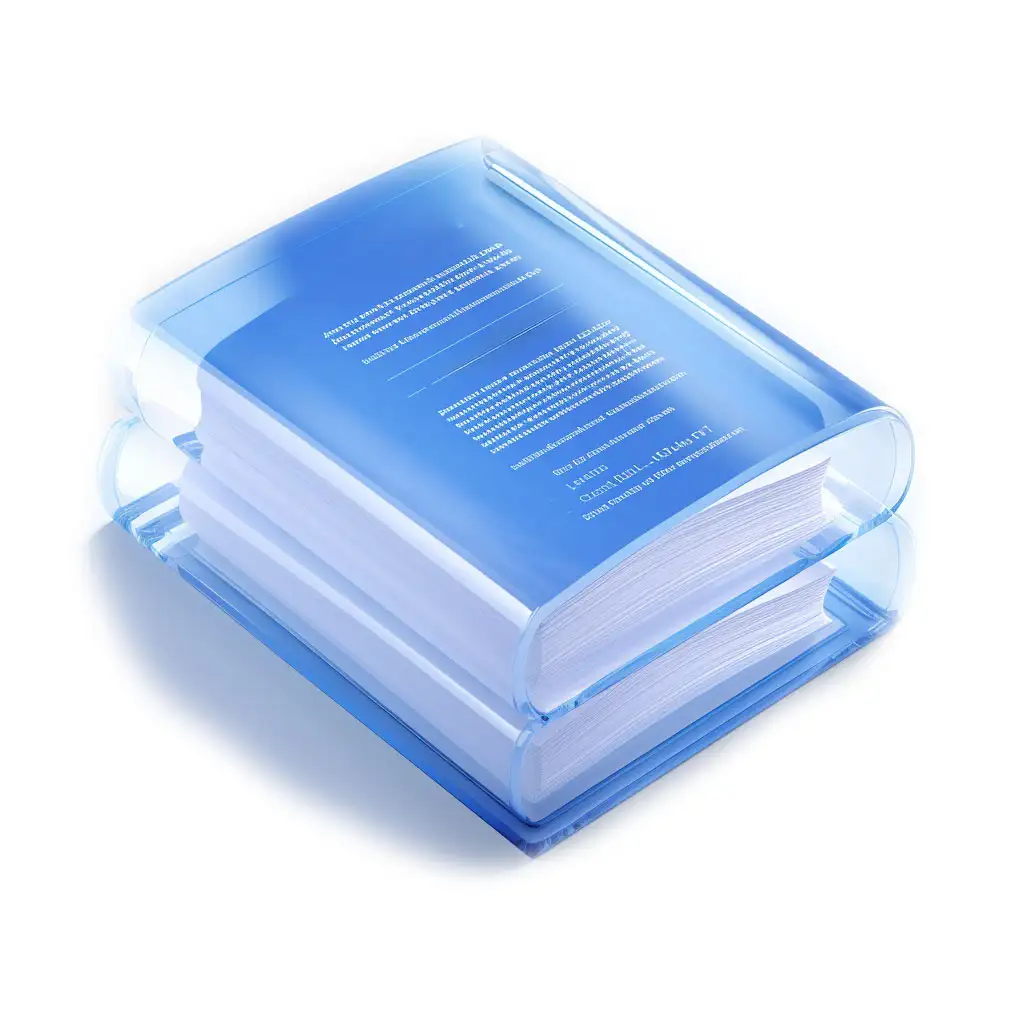New York Paycheck Tax Calculator
How to Use the New York Paycheck Tax Calculator
Our New York Paycheck Calculator is designed to simplify your payroll calculations, whether you’re an employee trying to understand your take-home pay or an employer ensuring you’re withholding the correct amounts. Follow these detailed steps to use the calculator effectively:
1. Country and State Selection
- Step: Upon accessing the calculator, the first action is to select your country and state. For users in New York, ensure you choose “United States” as the country and “New York” as the state. This is crucial because tax rates and regulations vary by location, and selecting New York adjusts the calculator to use the state-specific tax rates and rules.
- Purpose: This step tailors the calculator to consider New York’s state income tax rates, which are different from other states and necessary for accurate calculation of your take-home pay.
2. Federal and State Claim Amounts
- Step: Enter the federal and state claim amounts as indicated on your W-4 form or state equivalent. These amounts are critical for determining how much federal and state tax should be withheld from your paycheck.
- Details: You’ll find these amounts in the tax documents provided by your employer or when you filled out your tax forms at the start of employment. They influence the amount of tax withheld from your paycheck by accounting for personal allowances and dependents.
3. Pay Periods
- Step: Choose your pay frequency from the available options: weekly, bi-weekly (every two weeks), monthly, or annually. This should match how often you receive your paycheck.
- Why It Matters: Pay frequency affects the calculation of your taxes and take-home pay because tax withholdings are calculated based on the amount of money you earn in each pay period. Selecting the correct pay period ensures the accuracy of the calculation.
4. Gross Wage Input
- Step: Input the amount of your gross wage for the selected pay period. Your gross wage is your income before any deductions or taxes are applied.
- Importance: This figure is the starting point for all calculations. It’s essential to enter this accurately to ensure the calculator can correctly determine the taxes to be withheld and thus, your net pay.
5. Select Pay Date
- Step: Pick the specific date of your next pay date or the date you usually receive your paycheck. If you’re uncertain, check your pay stub or ask your employer.
- Purpose: This information helps synchronize the tax calculations with your actual pay schedule, ensuring that the calculated withholding amounts are as accurate as possible for the specific pay period.
6. Calculation
- Step: After entering all the required information, click the “Calculate” button to generate your detailed tax breakdown. The calculator will display your gross pay, total deductions, and net pay (take-home pay).
- Understanding Your Results: The detailed tax breakdown will include:
- Gross Pay: Your total earnings before deductions.
- Federal Taxes: The amount withheld for federal income taxes.
- State Taxes: The amount withheld for New York state taxes.
- Other Deductions: Any other pre-tax deductions, such as retirement contributions or health insurance premiums.
- Net Pay: What you take home after all deductions are subtracted from your gross pay.
Tips for Accurate Results
- Double-Check Your Inputs: Ensure all the information entered matches your pay stub or employment documents.
- Update for Changes: If your pay rate, tax status, or deductions change, use the calculator again to adjust your estimates.
- Use for Planning: Regularly using the calculator can help you plan for tax liabilities, adjust withholdings, or make informed decisions about benefits and retirement contributions.
Found our Free NY State Paycheck Tax Calculator useful? Bookmark and share it.

2024 New York State Income Tax Table: Married (Filing Separately) or Single
| Tax Rate | Taxable Income Bracket | Tax Owed |
|---|---|---|
| 4% | $0 to $8,500 | 4% of taxable income |
| 4.5% | $8,501 to $11,700 | $340 plus 4.5% of the amount over $8,500 |
| 5.25% | $11,701 to $13,900 | $484 plus 5.25% of the amount over $11,700 |
| 5.5% | $13,901 to $80,650 | $600 plus 5.5% of the amount over $13,900 |
| 6% | $80,651 to $215,400 | $4,271 plus 6% of the amount over $80,650 |
| 6.85% | $215,401 to $1,077,550 | $12,356 plus 6.85% of the amount over $215,400 |
| 9.65% | $1,077,551 to $5,000,000 | $71,413 plus 9.65% of the amount over $1,077,550 |
| 10.3% | $5,000,001 to $25,000,000 | $449,929 plus 10.3% of the amount over $5,000,000 |
| 10.9% | $25,000,001 and over | $2,509,929 plus 10.9% of the amount over $25,000,000 |
| If line 38 is over | but not over | The tax is: |
|---|---|---|
| $0 | $8,500 | 4% of line 38 |
| $8,500 | $11,700 | $340 plus 4.5% of the excess over $8,500 |
| $11,700 | $13,900 | 484 plus 5.25% of the excess over $11,700 |
| $13,900 | $80,650 | 600 plus 5.5% of the excess over $13,900 |
| $80,650 | $215,400 | 4,271 plus 6% of the excess over $80,650 |
| $215,400 | $1,077,550 | 12,356 plus 6.85% of the excess over $215,400 |
| $1,077,550 | $5,000,000 | 71,413 plus 9.65% of the excess over $1,077,550 |
| $5,000,000 | $25,000,000 | 449,929 plus 10.3% of the excess over $5,000,000 |
| $25,000,000 | ---- | 2,509,929 plus 10.9% of the excess over $25,000,000 |
Data retrieved from: https://www.tax.ny.gov/forms/current-forms/it/it201i.htm#ny-state-tax-rate-schedule
What is a Paycheck Calculator?
A paycheck calculator is a digital tool designed to compute the amount of money an employee takes home after all deductions and taxes are accounted for. This sophisticated software simplifies the complex calculations involved in payroll processing, transforming gross wages into net pay, the sum an employee actually receives. By incorporating variables such as wage amount, pay frequency, tax status, and additional withholdings, a paycheck calculator provides an accurate estimation of take-home pay.
Importance of a Paycheck Calculator
The importance of a paycheck calculator in both personal finance and business operations cannot be overstated. For employees, it demystifies the sometimes opaque process of payroll deductions, enabling individuals to plan their budgets and financial commitments with confidence. For employers, it’s an indispensable tool that ensures accuracy and compliance in payroll processing, crucial for maintaining trust and adhering to tax laws.
Accurate Tax Withholding: Calculators are updated with the latest tax tables for federal, state, and local taxes, ensuring deductions are precise and in line with current regulations.
Compliance with Regulations: By accurately calculating withholdings, employers avoid penalties associated with underpayment or non-compliance with tax laws.
Financial Planning: Employees benefit from understanding their net pay, allowing for better financial planning and decision-making.
Ease of Use
Modern paycheck calculators are designed with user-friendliness in mind. Users can input their data through a simple interface, usually requiring minimal financial knowledge. The calculator then processes this data using complex algorithms, delivering results in an understandable format. This accessibility ensures that both employees unfamiliar with tax laws and busy HR professionals can achieve accurate results with minimal effort.
Time-Saving Aspects
Before the advent of these calculators, payroll was a time-consuming process involving manual calculations or spreadsheets, prone to human error and requiring extensive time investment. Paycheck calculators dramatically reduce this workload by automating the calculation process, allowing for instant results. This efficiency frees up time for businesses to focus on core activities and for individuals to manage their finances without dedicating hours to deciphering tax codes and deduction rules.
Role in Ensuring Accurate and Timely Payroll Processing
The role of a paycheck calculator extends beyond mere convenience; it’s a critical component in the ecosystem of payroll processing that ensures accuracy and timeliness. Mistakes in payroll can lead to dissatisfaction, legal issues, and financial penalties, making reliability paramount.
Prevents Errors: Automating calculations minimizes the risk of errors associated with manual payroll processing, ensuring employees are paid correctly.
Updates and Compliance: These calculators are regularly updated to reflect the latest tax laws and regulations, ensuring compliance without the need for users to track legislative changes.
Enhanced Employee Trust: Accurate and consistent paychecks enhance trust between employers and employees, crucial for maintaining morale and retention.
Understanding Paycheck Components
Navigating through a paycheck and understanding its various components is essential for both employers and employees. This glossary section breaks down common terms you’ll encounter on a paycheck, clarifying their meanings and relevance. By familiarizing yourself with these terms, you can better understand how your pay is calculated and what deductions are made. This knowledge not only helps in financial planning but also ensures you’re aware of your rights and obligations regarding payroll.
Gross Pay
Definition: Gross pay refers to the total amount of money earned by an employee before any deductions or taxes are applied. It includes wages, salaries, overtime pay, bonuses, and any other earnings.
Importance: Understanding your gross pay is crucial because it serves as the basis for calculating taxes and other deductions. It reflects the full amount of your labor’s worth before the legal and voluntary deductions are taken out.
Net Pay
Definition: Net pay, often referred to as “take-home pay,” is the amount of money an employee receives after all deductions, including taxes, insurance premiums, retirement contributions, and others, have been subtracted from the gross pay.
Importance: This is the actual amount that ends up in your bank account or paycheck. Knowing your net pay is vital for budgeting and financial planning, as it represents the real income available to you for spending and saving.
Federal Taxes
Definition: Federal taxes are withholdings from your paycheck that go to the federal government, based on the income tax rates set by the IRS. These rates are progressive, meaning they increase as your income increases.
Importance: Federal taxes are a significant part of your payroll deductions. Understanding these taxes helps you grasp how your tax bracket and the information you provide on your W-4 form (such as filing status and allowances) affect your paycheck.
State Taxes
Definition: State taxes are similar to federal taxes but are collected by the state in which you work. The rates and rules for state taxes vary depending on the state, with some states having no income tax at all.
Importance: For residents of New York and other states with state income tax, understanding this deduction is crucial as it directly impacts your net pay. It’s important to note that state tax regulations can change, affecting how much is withheld from your paycheck.
Payroll Deductions
Definition: Payroll deductions are amounts taken out of your gross pay for various reasons, including federal and state taxes, Social Security and Medicare contributions (FICA taxes), health insurance premiums, retirement plan contributions, and other voluntary deductions.
Importance: Payroll deductions significantly impact your net pay. Understanding these deductions enables you to accurately track where your money is going and identify ways to maximize your take-home pay, such as participating in pre-tax benefit plans.
Pay Periods
Definition: A pay period is the recurring schedule by which employers pay their employees. Common pay periods include weekly, bi-weekly (every two weeks), semi-monthly (twice a month), and monthly.
Importance: The frequency of your pay periods affects your budgeting and financial planning. Understanding how often you’re paid helps you manage cash flow and plan for both regular expenses and savings.
Additional Common Terms
- FICA Taxes: These are payroll taxes for Social Security and Medicare, shared between employers and employees. They’re based on a set percentage of your gross pay.
- Voluntary Deductions: These include contributions to retirement accounts, health savings accounts (HSAs), flexible spending accounts (FSAs), life insurance premiums, and others. Opting into these can lower your taxable income and provide financial benefits.
- Year-to-Date (YTD) Amounts: This reflects the total amount of money earned and deductions taken out since the beginning of the calendar year. It’s useful for tracking overall income and deductions for tax planning and financial analysis.

2024 New York State Income Tax Table: Qualifying Widower or Married (Filing Jointly).
| Tax Rate | Taxable Income Bracket | Tax Owed |
|---|---|---|
| 4% | $0 to $17,150 | 4% of taxable income |
| 4.5% | $17,151 to $23,600 | $686 plus 4.5% of the amount over $17,150 |
| 5.25% | $23,601 to $27,900 | $976 plus 5.25% of the amount over $23,600 |
| 5.5% | $27,901 to $161,550 | $1,202 plus 5.5% of the amount over $27,900 |
| 6% | $161,551 to $323,200 | $8,553 plus 6% of the amount over $161,550 |
| 6.85% | $323,201 to $2,155,350 | $18,252 plus 6.85% of the amount over $323,200 |
| 9.65% | $2,155,351 to $5,000,000 | $143,754 plus 9.65% of the amount over $2,155,350 |
| 10.3% | $5,000,001 to $25,000,000 | $418,263 plus 10.3% of the amount over $5,000,000 |
| 10.9% | $25,000,001 and over | $2,478,263 plus 10.9% of the amount over $25,000,000 |
| If line 38 is over | but not over | The tax is: |
|---|---|---|
| $0 | $17,150 | 4% of line 38 |
| $17,150 | $23,600 | $686 plus 4.5% of the excess over $17,150 |
| $23,600 | $27,900 | $976 plus 5.25% of the excess over $23,600 |
| $27,900 | $161,550 | $1,202 plus 5.5% of the excess over $27,900 |
| $161,550 | $323,200 | $8,553 plus 6% of the excess over $161,550 |
| $323,200 | $2,155,350 | $18,252 plus 6.85% of the excess over $323,200 |
| $2,155,350 | $5,000,000 | $143,754 plus 9.65% of the excess over $2,155,350 |
| $5,000,000 | $25,000,000 | $418,263 plus 10.3% of the excess over $5,000,000 |
| $25,000,000 | ---- | $2,478,263 plus 10.9% of the excess over $25,000,000 |
Data retrieved from: https://www.tax.ny.gov/forms/current-forms/it/it201i.htm#ny-state-tax-rate-schedule

2024 New York State Income Tax Table: Head of Household
| Tax Rate | Taxable Income Bracket | Tax Owed |
|---|---|---|
| 4% | $0 to $12,800 | 4% of taxable income |
| 4.5% | $12,801 to $17,650 | $512 plus 4.5% of the amount over $12,800 |
| 5.25% | $17,651 to $20,900 | $730 plus 5.25% of the amount over $17,650 |
| 5.5% | $20,901 to $107,650 | $901 plus 5.5% of the amount over $20,900 |
| 6% | $107,651 to $269,300 | $5,672 plus 6% of the amount over $107,650 |
| 6.85% | $269,301 to $1,616,450 | $15,371 plus 6.85% of the amount over $269,300 |
| 9.65% | $1,616,451 to $5,000,000 | $107,651 plus 9.65% of the amount over $1,616,450 |
| 10.3% | $5,000,001 to $25,000,000 | $434,163 plus 10.3% of the amount over $5,000,000 |
| 10.9% | $25,000,001 and over | $2,494,163 plus 10.9% of the amount over $25,000,000 |
| If line 38 is over | but not over | The tax is: |
|---|---|---|
| $0 | $12,800 | 4% of line 38 |
| $12,800 | $17,650 | $512 plus 4.5% of the excess over $12,800 |
| $17,650 | $20,900 | 730 plus 5.25% of the excess over $17,650 |
| $20,900 | $107,650 | 901 plus 5.5% of the excess over $20,900 |
| $107,650 | $269,300 | 5,672 plus 6% of the excess over $107,650 |
| $269,300 | $1,616,450 | 15,371 plus 6.85% of the excess over $269,300 |
| $1,616,450 | $5,000,000 | 107,651 plus 9.65% of the excess over $1,616,450 |
| $5,000,000 | $25,000,000 | 434,163 plus 10.3% of the excess over $5,000,000 |
| $25,000,000 | ---- | 2,494,163 plus 10.9% of the excess over $25,000,000 |
Data retrieved from: https://www.tax.ny.gov/forms/current-forms/it/it201i.htm#ny-state-tax-rate-schedule
New York State Income Tax
New York State’s income tax system is a vital component of the state’s fiscal structure, funding essential services such as education, healthcare, and infrastructure. For residents and workers within the state, understanding the nuances of this system is crucial for compliance and optimal financial planning. This introduction aims to shed light on the key aspects of New York State income tax, including the range of tax rates for the 2023-2024 tax year, and underscore the importance of residency rules and filing status in determining one’s tax obligations.
Overview of New York State Income Tax Requirements
New York State imposes an income tax on the earnings of individuals, estates, and trusts. The tax system is progressive, meaning the rate increases as the taxpayer’s income grows. For the 2023-2024 tax year, New York State has implemented nine income tax brackets, with rates ranging from 4% to 10.9%. This progressive structure ensures a fair tax burden distribution, with higher earners contributing a larger percentage of their income.
Taxpayers in New York must file annually by April 15th, with extensions available for those needing more time. In addition to state income tax, residents of New York City and Yonkers may also be subject to local income taxes, further emphasizing the complexity of tax compliance within the state.
Highlight of the Range of Income Tax Rates for 2023-2024
For the 2023-2024 tax year, New York State has set income tax rates starting at 4% for individuals earning up to $8,500 and climbing to 10.9% for those with incomes exceeding $25,000,001. These rates apply across various filing statuses, including single filers, married couples filing jointly, and heads of households, each with its specific tax brackets and rates. Additionally, high earners are subject to a supplemental tax, underscoring the state’s commitment to a progressive tax system that adjusts based on the ability to pay.
Importance of Understanding Residency Rules and Filing Status
Residency status plays a pivotal role in determining a taxpayer’s obligations under New York State’s income tax law. The state differentiates between residents, part-year residents, and non-residents, each with unique filing requirements and tax liabilities. Full-year residents are taxed on all income, regardless of where it was earned, while non-residents are taxed only on income derived from New York sources. Part-year residents are taxed on all income earned while residing in the state and on New York-source income earned during periods of non-residence.
Filing status—such as single, married filing jointly, married filing separately, or head of household—also significantly impacts tax rates and liabilities. This status determines the applicable tax bracket and standard deduction, affecting the overall tax bill.
Understanding these intricacies is crucial for accurate tax filing and optimizing one’s financial position. Taxpayers must accurately determine their residency status and choose the correct filing status to ensure compliance with New York State tax laws and avoid overpaying or underpaying their taxes.
Understanding New York State Income Tax Rates and Brackets
New York State employs a progressive income tax system, meaning that the rate of taxation increases as taxable income rises. This system is designed to ensure fairness in the tax process, with the tax burden distributed more heavily on those who have higher earnings. The progressive nature of New York’s tax system reflects the principle of ability to pay, acknowledging that those with greater financial resources have a higher capacity to contribute to public goods and services.
Progressive Income Tax System in New York State
For the tax year 2023-2024, New York State has established nine income tax brackets, with rates ranging from 4% for individuals with lower earnings up to 10.9% for the highest earners. These brackets are adjusted annually for inflation and other fiscal considerations, ensuring they remain relevant and equitable.
Tax brackets differ based on filing status, such as single filers, married couples filing jointly, married filing separately, and heads of households. Each status has specific brackets, reflecting the different economic realities of taxpayers in these categories. For example, married couples filing jointly have double the income bracket thresholds of single filers, recognizing the shared financial responsibilities of married individuals.
The tax rates and brackets for the 2023-2024 tax year are as follows:
- Single Filers and Married Filing Separately: Tax rates range from 4% on income up to $8,500 to 10.9% on income over $25,000,001.
- Married Filing Jointly or Qualifying Widow(er): Rates start at 4% on income up to $17,150, escalating to 10.9% on income exceeding $25,000,001.
- Head of Household: The rates begin at 4% on income up to $12,800, with the highest rate of 10.9% applied to income over $25,000,001.
This bracketed system means that not all of an individual’s income is taxed at the same rate; instead, different portions of income are taxed at corresponding rates. For instance, a single filer with a taxable income of $50,000 would pay 4% on the first $8,500, 4.5% on the income between $8,501 and $11,700, and so on, up through the brackets.
Supplemental Tax for High Earners
In addition to the standard income tax rates, New York State imposes a supplemental tax on high earners. This supplemental tax is designed to ensure that individuals with substantial incomes contribute an equitable share to state revenues. For the 2023-2024 tax year, individuals with an adjusted gross income (AGI) over $107,650 are subject to this additional tax.
The supplemental tax functions by recalculating the tax liability for high earners, potentially adding a flat rate tax on all earnings or recalculating tax owed based on higher brackets. This can lead to an effective marginal rate that is closer to flat for very high incomes, especially when the taxpayer’s income significantly exceeds the threshold for the highest state tax bracket.
This supplemental tax underscores New York’s commitment to a progressive tax system, where the tax structure adapts to ensure fairness across all income levels. High earners are thus encouraged to closely examine their tax obligations and consider the impact of the supplemental tax on their overall tax liability.

Supplemental Income Tax in New York State
New York State implements a supplemental income tax targeting high earners, a measure designed to ensure that individuals with substantial incomes contribute their fair share to state revenues. This additional layer of taxation is indicative of New York’s progressive tax policy, aiming at tax equity across various income levels.
Overview of the Supplemental Tax for High Earners
The supplemental income tax in New York State is applicable to individuals whose adjusted gross income (AGI) exceeds a certain threshold. For the tax year 2023-2024, this threshold is set at $107,650 for all filing statuses. This tax is in addition to the standard state income tax rates, which range from 4% to 10.9% across nine income brackets.
This supplemental tax is designed to recalibrate the tax obligations of high earners, ensuring that the progressive nature of New York’s tax system extends effectively into the highest income ranges. It acknowledges the principle that those who are most able to pay should contribute a larger share to the public coffers, supporting essential state services and infrastructure.
How the Supplemental Tax Calculation Works
The calculation of the supplemental tax is complex, involving additional steps beyond the basic determination of tax liability according to the standard brackets and rates. Once an individual’s AGI exceeds the $107,650 mark, a specific formula is applied to calculate the supplemental tax owed. This may involve:
- Recapture of Lower Bracket Benefits: For some high earners, the supplemental tax calculation can effectively negate the benefits of lower tax rates applied to the initial portions of their income. This is achieved through a recapture mechanism, where savings gained from lower brackets are added back into the tax calculation, potentially leading to an almost flat tax rate on all earnings.
- Alternative Tax Computation: In certain cases, the tax liability for high earners is computed based on an individualized system rather than the standard rate schedule. This might result in an adjusted tax rate that reflects the individual’s capacity to contribute more significantly to state revenues.
Resources for Calculating Supplemental Tax
Calculating the supplemental income tax can be daunting due to its complexity and the specificities involved in the recapture and alternative computation mechanisms. Fortunately, there are several resources available to assist taxpayers in this process:
NYS Department of Taxation and Finance: The official website provides detailed guides, tax tables, and worksheets tailored to help individuals understand and calculate their supplemental tax liability. These resources are invaluable for gaining a clear understanding of how the supplemental tax applies to specific situations.
Tax Software: Many modern tax software programs are equipped to handle the intricacies of New York State’s supplemental tax calculation. By inputting your financial details, the software can automatically compute any supplemental tax owed, simplifying the process significantly.
Professional Tax Advisors: For those with complex tax situations or substantial incomes, consulting with a tax professional, such as a CPA or a tax attorney specializing in New York State tax law, can provide personalized guidance and ensure accuracy in tax filings.
Filing Deadlines and Requirements for New York State Income Tax Returns
For individuals and families across New York State, understanding the annual tax filing deadlines and requirements is crucial to ensure compliance with state tax laws and avoid potential penalties. The process is aligned closely with federal tax guidelines, but there are specific considerations for New York State residents, particularly regarding due dates and available filing options such as the IRS’ Direct File program.
Due Dates for New York State Income Tax Returns
The primary deadline for filing income tax returns in New York State is April 15th of each year, coinciding with the federal tax deadline. This date marks the cutoff for submitting your completed tax returns for income earned in the previous calendar year. For example, for income earned during the 2023 tax year, the filing deadline is April 15, 2024.
If the deadline falls on a weekend or a public holiday, the due date is extended to the next business day. This extension provides taxpayers with additional time to finalize and submit their returns without penalty.
For those unable to meet the April 15th deadline, New York State, like the federal system, allows for an extension. By filing for an extension, taxpayers can push their filing deadline to October 15th. However, it’s important to note that this extension applies only to the filing of the tax return; any taxes owed are still due by the original April 15th deadline. To avoid interest and penalties, taxpayers are encouraged to estimate and pay any owed taxes by April 15th, even if they plan to file their returns later.
Introduction to the IRS' Direct File Program
The IRS’ Direct File program is a free federal tax return filing service provided directly by the Internal Revenue Service. Designed to simplify the tax filing process for eligible taxpayers, Direct File allows users to submit their federal tax returns online, eliminating the need for paper forms or commercial tax preparation software.
While Direct File is focused on federal tax returns, its relevance to New Yorkers cannot be understated, especially for those with straightforward tax situations. As of 2024, although Direct File may not support state tax returns directly, it serves as a gateway to free or low-cost options for filing New York State returns. The IRS and New York State Department of Taxation and Finance offer resources directing taxpayers to approved software or services that can handle state filings, often at no additional cost for eligible individuals.
Filing Requirements for New York State Residents
Generally, you are required to file a New York State income tax return if you meet any of the following criteria:
- You are a New York State resident, and you are required to file a federal return.
- Your federal gross income plus New York additions was more than $4,000 ($3,100 if you are single and can be claimed as a dependent on another taxpayer’s federal return).
- You are not a New York State resident but received income from New York sources during the tax year.

Residency and Income Tax Obligations in New York State
New York State’s tax system intricately defines how individuals are taxed based on their residency status. Understanding whether you’re considered a resident, non-resident, or part-year resident is crucial for accurately filing your taxes and meeting your tax obligations. Additionally, the modern work environment, including telecommuting, adds another layer of complexity to determining tax liabilities.
Criteria for Filing as a New York State Resident
You are considered a resident of New York State for tax purposes if you meet either of these conditions:
- Domicile in New York: Your domicile is your permanent home, the place you intend to return to after periods of absence. If New York is your domicile, you are a resident for tax purposes, regardless of where you physically spend your days.
- Statutory Residence: Even if your domicile is not in New York, you can be considered a statutory resident if you maintain a permanent place of abode in New York for more than 11 months of the year and spend at least 184 days in the state during the tax year.
As a resident, you are subject to New York State tax on all income, regardless of where it is earned. This comprehensive tax obligation underscores the importance of understanding and accurately establishing your residency status.
Tax Obligations for Part-Year Residents and Non-Residents
- Part-Year Residents: If you move to or from New York during the tax year, you are considered a part-year resident. Part-year residents are taxed on all income received while a resident and only on New York-source income received during the portion of the year they were not residents. Properly apportioning income to the periods of residency and non-residency is crucial for part-year residents.
- Non-Residents: If you are not a resident of New York State but receive income from New York sources, you are considered a non-resident for tax purposes. Non-residents are only taxed on income derived from New York sources. This includes wages for work performed in New York, income from real estate located in the state, and other New York-based income.
Telecommuting and Its Impact on Tax Liabilities
The rise of telecommuting has introduced new considerations for determining tax obligations, especially for individuals working for New York-based employers while living in another state. New York employs a “convenience of the employer” rule, which stipulates that income earned by an employee working remotely for a New York employer is subject to New York State income tax unless the employer has established the necessity of working from an out-of-state location.
This rule means that days worked outside New York for the convenience of the employee (e.g., choosing to work from home in another state) are treated as days worked in New York for tax purposes. However, if the employer mandates that the work be performed outside New York, those days are not considered New York workdays.
For New York residents who telecommute to jobs located in other states, understanding how their income is taxed by both New York and the state where the work is performed is important to avoid double taxation. New York offers tax credits for taxes paid to other jurisdictions, which can mitigate the impact of dual tax liabilities.
Navigating Residency and Tax Obligations
Accurately determining your residency status and understanding the implications of telecommuting are essential steps in fulfilling your New York State tax obligations. Whether you’re a full-year resident, part-year resident, or non-resident, being informed about your specific tax responsibilities can help you navigate the complexities of New York State’s tax system effectively. For those unsure about their status or how to report their income, consulting with a tax professional or utilizing resources provided by the New York State Department of Taxation and Finance is advisable.
Standard Deductions and Tax Credits in New York State
New York State’s income tax structure provides various deductions and tax credits designed to reduce the taxable income of its residents, part-year residents, and non-residents who earn income from New York sources. Understanding these deductions and credits is crucial for taxpayers looking to minimize their tax liabilities while complying with state tax laws.
Standard Deduction Amounts for Various Filing Statuses
The standard deduction is a set amount that reduces the income on which you are taxed. In New York State, the standard deduction amount varies based on your filing status. For the tax year 2023, the standard deductions are as follows:
- Single: $8,000
- Married Filing Jointly or Qualifying Widow(er): $16,050
- Married Filing Separately: $8,000
- Head of Household: $11,200
- Single (claimed as a dependent): $3,100
These standard deduction amounts are subtracted from your adjusted gross income (AGI) before calculating the amount of tax you owe, thereby lowering your taxable income and, as a result, your overall tax liability.
How Deductions and Tax Credits Affect Your Taxable Income
Deductions and tax credits play a significant role in determining your final tax bill. While both reduce your tax liability, they do so in different ways:
Deductions: These reduce the amount of your income that is subject to tax. Deductions lower your taxable income, which can potentially place you in a lower tax bracket, reducing the percentage of your income paid in taxes. In addition to the standard deduction, New York State allows for other deductions, such as those for student loan interest, IRA contributions, and certain business expenses.
Tax Credits: These reduce your tax liability directly, dollar for dollar. Unlike deductions, which lower the amount of income subject to tax, tax credits reduce your tax bill itself. For example, a $1,000 tax credit would reduce your tax bill by $1,000. Tax credits can be refundable or non-refundable; refundable credits can result in a tax refund if they exceed the amount of taxes owed.
Unique Tax Credits Available to New York State Taxpayers
New York State offers several unique tax credits designed to provide financial relief to specific groups of taxpayers. Some notable credits include:
- Empire State Child Credit: A credit for taxpayers with children who qualify for the federal child tax credit, providing additional financial support for families.
- Earned Income Credit (EIC): Mirroring the federal EIC, New York’s version provides a refundable credit to low- and moderate-income workers and families, encouraging and rewarding work.
- College Tuition Credit: A credit for qualified college tuition expenses paid for eligible students, designed to make higher education more affordable for New York residents.
- Real Property Tax Credit: Aimed at homeowners and renters with low incomes, this credit provides relief for those who pay a significant portion of their income towards property taxes or rent.

New York City and Yonkers Income Tax
Residents of New York City (NYC) and Yonkers face additional local income tax obligations beyond their state and federal tax responsibilities. These local taxes are levied to fund municipal services and are calculated based on the taxpayer’s income level, similar to state and federal systems. Understanding these taxes is essential for residents of these areas to accurately fulfill their tax obligations and plan their finances.
Overview of Local Income Taxes in New York City and Yonkers
New York City Income Tax: New York City imposes its own income tax on residents, making it one of the few cities in the United States to do so. This tax is administered by the New York State Department of Taxation and Finance and is filed alongside the state return. NYC’s local income tax rates are progressive, based on the taxpayer’s income and filing status.
Yonkers Income Tax: Similarly, the City of Yonkers imposes a local income tax surcharge on residents and on individuals who work in Yonkers. This surcharge is in addition to New York State income tax and, for residents, is based on their worldwide income, similar to the state tax.
Tax Rates and Brackets for New York City Residents
For the 2023 tax year, New York City’s local income tax rates range from 3.078% to 3.876%, depending on the taxpayer’s income and filing status. These rates are applied to taxable income, which is your federal adjusted gross income (AGI) modified by specific New York State additions and subtractions.
The brackets for NYC income tax are as follows (these rates are illustrative and subject to change):
For Single Filers and Married Filing Separately:
- Up to $12,000: 3.078%
- $12,001 to $25,000: 3.762%
- $25,001 to $50,000: 3.819%
- Over $50,000: 3.876%
For Married Filing Jointly:
- The brackets double the threshold amounts applicable to single filers, with the same tax rates applied.
For Head of Household:
- The brackets and rates are adjusted to reflect the intermediate levels between single filers and married filing jointly.
Taxpayers are advised to consult the latest tax tables or use tax preparation software to accurately calculate their NYC income tax liability based on their specific circumstances.
How Local Taxes Complement State-Level Obligations
Local income taxes in New York City and Yonkers complement state-level tax obligations, adding an additional layer of complexity to the tax returns of residents. However, these taxes follow the same progressive principles, ensuring that individuals contribute based on their ability to pay.
For individuals who both live and work in these localities, understanding the combined impact of federal, state, and local taxes on their overall tax burden is crucial. The local taxes are designed to fund city-specific services and initiatives, from education and public safety to infrastructure improvements, directly benefiting the communities where the taxpayers reside.
It’s important for taxpayers in New York City and Yonkers to account for these local taxes when planning their finances and tax payments. Properly accounting for local income taxes ensures compliance with tax laws and helps avoid unexpected tax liabilities at the end of the fiscal year. For accurate calculation and filing, taxpayers may consider using approved tax software or consulting with a tax professional familiar with New York City and Yonkers tax regulations.
Key Considerations for New York Taxpayers
For individuals navigating the complexities of New York State’s tax system, understanding certain key aspects can significantly impact tax liabilities and financial planning. This section delves into the importance of residency status, how the source and location of income affect tax liabilities, and strategies for effectively managing tax obligations within the state.
Importance of Understanding Your Residency Status
Your residency status is a critical factor in determining your tax obligations to New York State. New York differentiates between residents, non-residents, and part-year residents, each with distinct tax implications:
- Residents are taxed on their worldwide income, regardless of where it was earned.
- Non-Residents are only taxed on income derived from New York sources.
- Part-Year Residents are taxed on all income received while they were residents of New York and on New York-source income received during the periods they were non-residents.
Incorrectly identifying your residency status can lead to underpayment or overpayment of taxes. Therefore, understanding and accurately establishing whether you’re a full-year resident, part-year resident, or non-resident based on New York State’s criteria is essential for compliance and optimizing your tax situation.
Impact of Income Source and Location on Tax Liabilities
The source of your income and its location play pivotal roles in determining your tax liabilities in New York State:
- Income Earned Within New York: For residents, all income, regardless of its source, is subject to New York State taxes. Non-residents, however, are taxed on income earned from New York sources, which might include wages for work physically performed in the state, income from property located in the state, or income from businesses operating within New York.
- Telecommuting: The rise of remote work has added complexity to tax liabilities, particularly for those who work for New York-based employers but live elsewhere. New York’s “convenience of the employer” rule may subject telecommuters’ income to New York State taxes, impacting their overall tax liability.
Strategies for Managing Tax Obligations in New York State
Effectively managing your tax obligations in New York State involves proactive planning and an understanding of the tax benefits and credits available to you. Here are some strategies to consider:
- Maximize Deductions and Credits: Take full advantage of New York State’s tax deductions and credits, such as those for education expenses, child care, and contributions to retirement accounts. Review the specific qualifications for each and plan your finances to maximize these benefits.
- Keep Accurate Records: Maintain detailed records of your income, deductions, and credits throughout the year to simplify the tax filing process and support your claims if audited.
- Understand Local Tax Implications: If you live or work in New York City or Yonkers, factor in local taxes when planning your tax strategy. These additional obligations can significantly impact your overall tax burden.
- Seek Professional Advice: Consider consulting with a tax professional who specializes in New York State tax law, especially if you have complex tax situations, multiple sources of income, or questions about your residency status and its implications.

Disclaimer: The content provided on this webpage is for informational purposes only and is not intended to be a substitute for professional advice. While we strive to ensure the accuracy and timeliness of the information presented here, the details may change over time or vary in different jurisdictions. Therefore, we do not guarantee the completeness, reliability, or absolute accuracy of this information. The information on this page should not be used as a basis for making legal, financial, or any other key decisions. We strongly advise consulting with a qualified professional or expert in the relevant field for specific advice, guidance, or services. By using this webpage, you acknowledge that the information is offered “as is” and that we are not liable for any errors, omissions, or inaccuracies in the content, nor for any actions taken based on the information provided. We shall not be held liable for any direct, indirect, incidental, consequential, or punitive damages arising out of your access to, use of, or reliance on any content on this page.
Trusted By
Trusted by 3.2M+ Employees: 21 Years of Service Across Startups to Fortune 500 Enterprises
Join our ever-growing community of satisfied customers today and experience the unparalleled benefits of TimeTrex.










Strength In Numbers
Join The Companies Already Benefiting From TimeTrex
Time To Clock-In
Start your 30-day free trial!
Experience the Ultimate Workforce Solution and Revolutionize Your Business Today
- Eliminate Errors
- Simple & Easy To Use
- Real-time Reporting

Saving businesses time and money through better workforce management since 2003.
Copyright © 2025 TimeTrex. All Rights Reserved.



